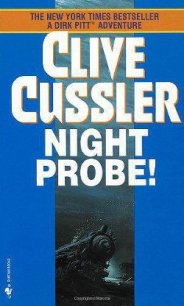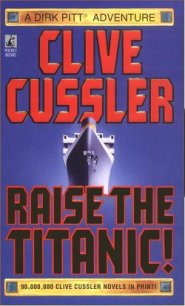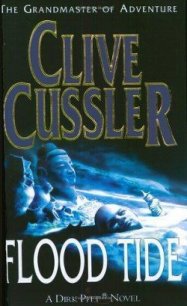Dragon - Cussler Clive (книги хорошем качестве бесплатно без регистрации .TXT) 📗
Returning to the cockpit, he stopped and chatted with Byrnes, who was running through a schematic of the bomb’s detonation circuits. Every so often the ordnance expert glanced at a small console mounted above his lap.
“Any chance of it going off before we get there?” asked Dennings.
“Lightning strike could do it,” answered Byrnes.
Dennings looked at him in horror. “A little late with a warning, aren’t you? We’ve been flying through the middle of an electrical storm since midnight.”
Byrnes looked up and grinned. “We could have gone up just as easily on the ground. What the hell, we made it, didn’t we?”
Dennings couldn’t believe Byrnes’s matter-of-fact attitude. “Was General Morrison aware of the risk?”
“Better than anyone. He’s been on the atomic bomb project from the beginning.”
Dennings shuddered and turned away. Insane, he thought, the operation was insane. It’d be a miracle if any of them lived to tell about it.
Five hours into the flight and lighter by 2,000 gallons of expended fuel, Dennings leveled the B-29 off at 10,000 feet. The crew became more upbeat as the dawn’s orange glow tinted the eastern sky. The storm was far behind them, and they could see the rolling swells of the sea and a few scattered white clouds.
Dennings’ Demons was cruising to the southwest at a leisurely 220 knots. Thankfully, they had picked up a light tail wind. Full daybreak showed them alone in the vast emptiness of the North Pacific Ocean. A solitary airplane going from nowhere to nowhere, Bombardier Stanton mused as he gazed absently out the windows of the nose.
Three hundred miles from Japan’s main island of Honshu, Dennings started a slow, gradual climb to 32,000 feet, the altitude at which Stanton would release the bomb on Osaka. Navigator Arnold announced they were twenty minutes ahead of schedule. At the current rate of speed, he figured they should be landing at Okinawa in a shade under five hours.
Dennings looked at the fuel gauges. He suddenly felt cheerful. Barring a hundred-knot headwind, they should make it with four hundred gallons to spare.
Not everyone was wallowing in good cheer. Seated at his engineer’s panel, Mosely studied the temperature gauge of engine number four. He didn’t like what he read. He routinely tapped the dial with his finger.
The needle twitched and wavered into the red.
He crawled aft through the tunnel and stared through a port at the underside of the engine. The nacelle was streaked with oil and smoke was trailing from the exhaust. Mosely returned to the cockpit and knelt in the narrow aisle between Dennings and Stromp.
“Bad news, Major. We’re going to have to shut down number four.”
“You can’t prod her along for a few more hours?” asked Dennings.
“No, sir, she can swallow a valve and catch fire at any minute.”
Stromp looked over at Dennings, his face somber. “I vote we shut four down for a while and let it cool off.”
Dennings knew Stromp was right. They would have to maintain their present altitude and nurse the other three engines to keep them from overheating. Then restart number four during the ascent to 32,000 feet and the bombing run.
He hailed Arnold, who was bent over his navigator’s board tracing the flight path. “How long before Japan?”
Arnold noted the slight drop in speed and made a swift calculation. “One hour and twenty-one minutes to the mainland.”
He nodded. “Okay, we’ll shut number four until we need it.”
Even as he spoke, Stromp closed the throttle, flicked off the ignition switch, and feathered the propeller. Next he engaged the automatic pilot.
For the next half hour everyone kept a wary eye on number four engine while Mosely called out the temperature drop.
“We have a landfall,” announced Arnold. “A small island coming up about twenty miles dead ahead.”
Stromp peered at it through binoculars. “Looks like a hot dog sticking out of the water.”
“Sheer rock walls,” observed Arnold. “No sign of a beach anywhere.”
“What’s it called?” asked Dennings.
“Doesn’t even show on the map.”
“Any sign of life? The Nips could be using it as an offshore warning station.”
“Looks barren and deserted,” answered Stromp.
Dennings felt safe for the moment. No enemy ships had been sighted, and they were too far from shore to be intercepted by Japanese fighters. He settled down in his seat and stared unseeing at the sea.
The men relaxed and passed around coffee and salami sandwiches, immune to the droning engines and the tiny speck that appeared ten miles away and 7,000 feet above their port wingtip.
Unknown to the crew of Dennings’ Demons, they had only a few minutes to live.
Lieutenant Junior Grade Sato Okinaga saw the brief glint from the reflected sun below him. He banked and went into a shallow dive for a closer inspection. It was an aircraft. No question. A plane from another patrol, most likely. He reached for the switch to his radio, but hesitated. In a few seconds he’d be able to make a positive identification.
A young and inexperienced pilot, Okinaga was one of the lucky ones. Out of his recently graduated class of twenty-two, who were rushed through training during Japan’s desperate days, he and three others were ordered to perform coastal patrols. The rest went into kamikaze squadrons.
Okinaga was deeply disappointed. He would have gladly given his life for the Emperor, but he accepted boring patrol duty as a temporary assignment, hoping to be called for a more glorious mission when the Americans invaded his homeland.
As the lone aircraft grew larger, Okinaga didn’t believe what he saw. He rubbed his eyes and squinted. Soon he could clearly make out the ninety-foot polished aluminum fuselage, the huge 141-foot wings, and the three-story vertical stabilizer of an American B-29.
He stared dumfounded. The bomber was flying out of the northeast from an empty sea, 20,000 feet below its combat ceiling. Unanswerable questions flooded his mind. Where had it come from? Why was it flying toward central Japan with one engine feathered? What was its mission?
Like a shark knifing toward a bleeding whale, Okinaga closed to within a mile. Still no evasive action. The crew seemed asleep or bent on suicide.
Okinaga had no more time for guessing games. The great winged bomber was looming up before him. He jammed the throttle of his Mitsubishi A6M Zero against its stop and made a circling dive. The Zero handled like a swallow, the 1,130-horsepower Sakae engine hurtling him behind and beneath the sleek, gleaming B-29.
Too late the tail gunner sighted the fighter and belatedly opened fire. Okinaga squeezed the gun tit on his control stick. His Zero shuddered as his two machine guns and two twenty-millimeter cannons shredded metal and human flesh.
A light touch of the rudder and his tracers ate their way into the wing and the B-29’s number-three engine. The cowling ripped and tore away, oil poured through holes, followed by flames. The bomber seemed to hover momentarily, and then it flipped on its side and spun toward the sea.
Only after the choked-off cry of the tail gunner and his short burst of fire did the Demons realize they were under attack. They had no way of knowing from what direction the enemy fighter had come. They barely had time to recover when the shells from the Zero ate into the starboard wing.
A strangled cry came from Stromp. “We’re going in!”
Dennings shouted into the intercom as he fought to level the plane. “Stanton, jettison the bomb! Jettison the goddamn bomb!”
The bombardier, wedged against his bombsight by the centrifugal force, yelled back. “It won’t fall free unless you straighten us out.”




